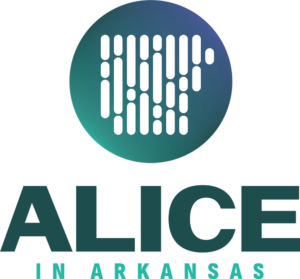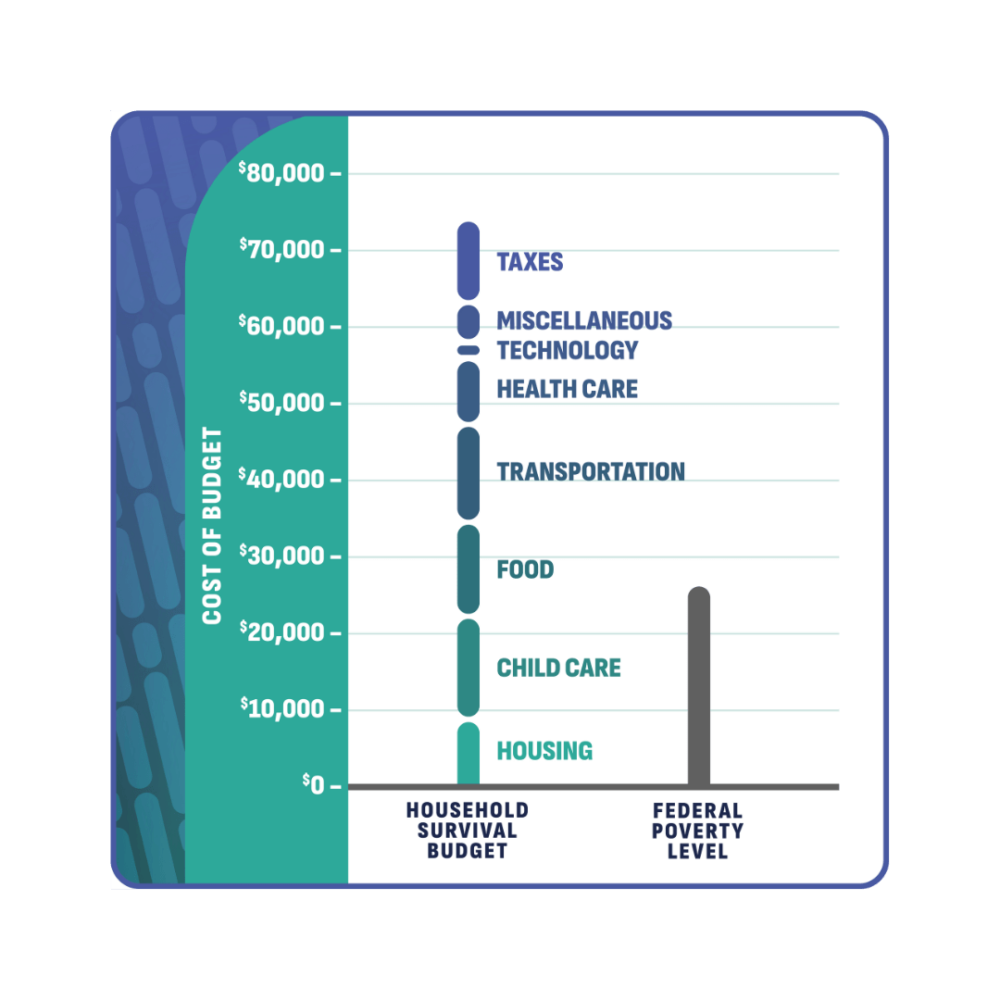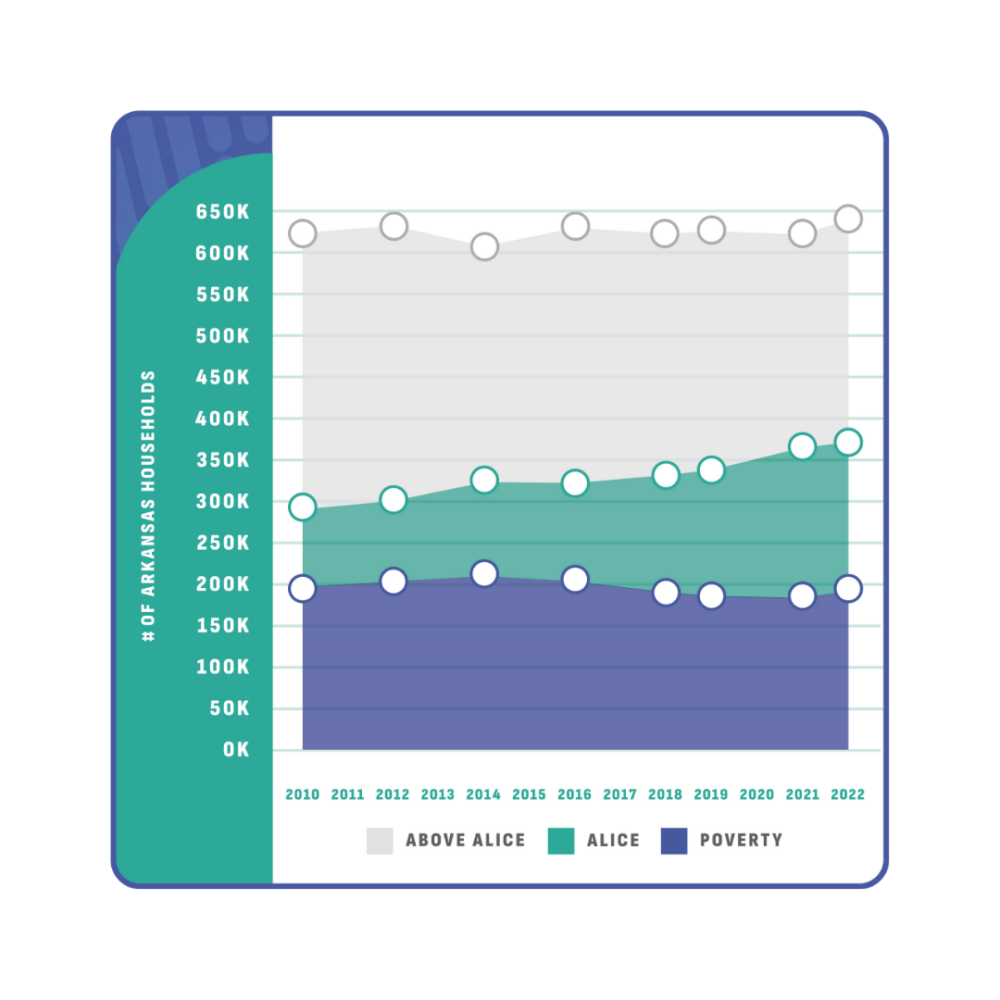With a 3.7% unemployment rate, Arkansas’ labor force is one of the strongest in the nation. But rising costs of basic household expenses continue to outpace wages, leaving nearly half of our state stretched impossibly thin.
These households are ALICE – Asset Limited, Income Constrained, Employed – earning above the Federal Poverty Level, working 40 hours a week, yet struggling to afford basic household expenses.



















